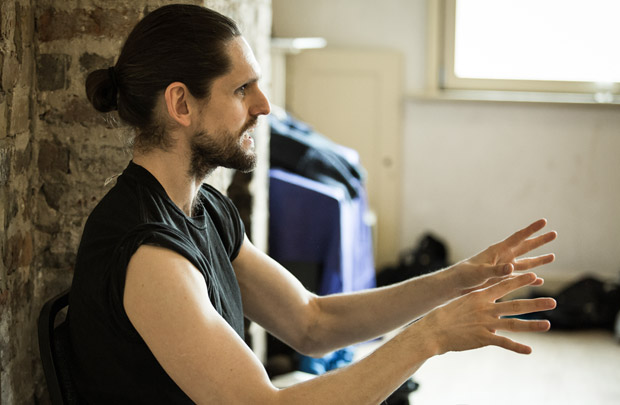
© Nicole Guarino. (Click image for larger version)
Wayne Parsons Vestige premieres, as part of a double bill at Bethnal Green’s Rich Mix on 25 February 2017. Full Details.
Having developed an international reputation as a contemporary dancer of considerable range and strength, working with companies such as National Dance Company Wales, Richard Alston Dance Company and Sydney Dance Company, Wayne Parsons is now forging a parallel career as a teacher and choreographer, specialising in narrative-based dance drama. Reviewing his work, Meeting, at the Resolution! Festival in 2013, our regular contributor, Graham Watts, declared that ‘…every moment seemed imbued with a particular meaning’.
Towards the end of 2016, Parsons spent a few weeks’ teaching dancers at the Beijing Dance Academy but his return to the UK has seen the development of his latest work, Vestige, which previews at Rich Mix on Saturday, 25 February. We caught up with Wayne to ask five questions ahead of these shows.
GW: Vestige concerns memories of a fictional celebrity. Can you explain your intentions with the work?
WP: Vestige touches on celebrity culture, gossip, fabricated truths and our desire to feel connected to famous people.
The work focuses on the life of a deceased fictional celebrity, named Livia. She’s a fashion icon, art collector, it-girl who captures the imagination of everyone she meets. We are introduced to three other characters: Suki, a curator who’s creating an exhibition of Livia’s belongings; Cath, an artist who’s painted a portrait of Livia; and Killian, an author who’s written a biography about Livia, who was his wife.
Vestige is all about how Suki, Cath and Killian’s versions of Livia collide and how their personal agendas play out through their portrayals of Livia in their different media.
At its core, Vestige is all about how easily the narrative of your life becomes manipulated once you’ve passed, especially if you’re famous.
After the recent deaths of so many high profile celebrities, especially in music and the arts, it seems especially timely. Was it influenced by any one event, in particular?
The initial impetus didn’t actually come from current events. It started with Sylvia Plath. I became very interested in the fact that Ted Hughes’ estate had all the rights to Plath’s work and that Hughes burnt Plath’s final two journals. I found this editing and manipulation of Plath’s history a rich starting point for Vestige. From here, I began thinking about posthumous fame; and famous women, more generally. Marilyn Monroe, Amy Winehouse, Isabella Blow came to mind. As much as I was interested in these women, I was fascinated by the people who survived them and the role they have in how the public remembers these women after they have died.
How would you describe your choreographic style and process to someone unfamiliar with your work?
My work is always driven by some sort of narrative. I appreciate the technical skill of a performer, but it’s not what I am searching for when I create. I favour movement that has the ability to say something about the way we experience the world; I want to feel something from my performers when I see them move. This visceral experience of the body is what I utilise when creating.
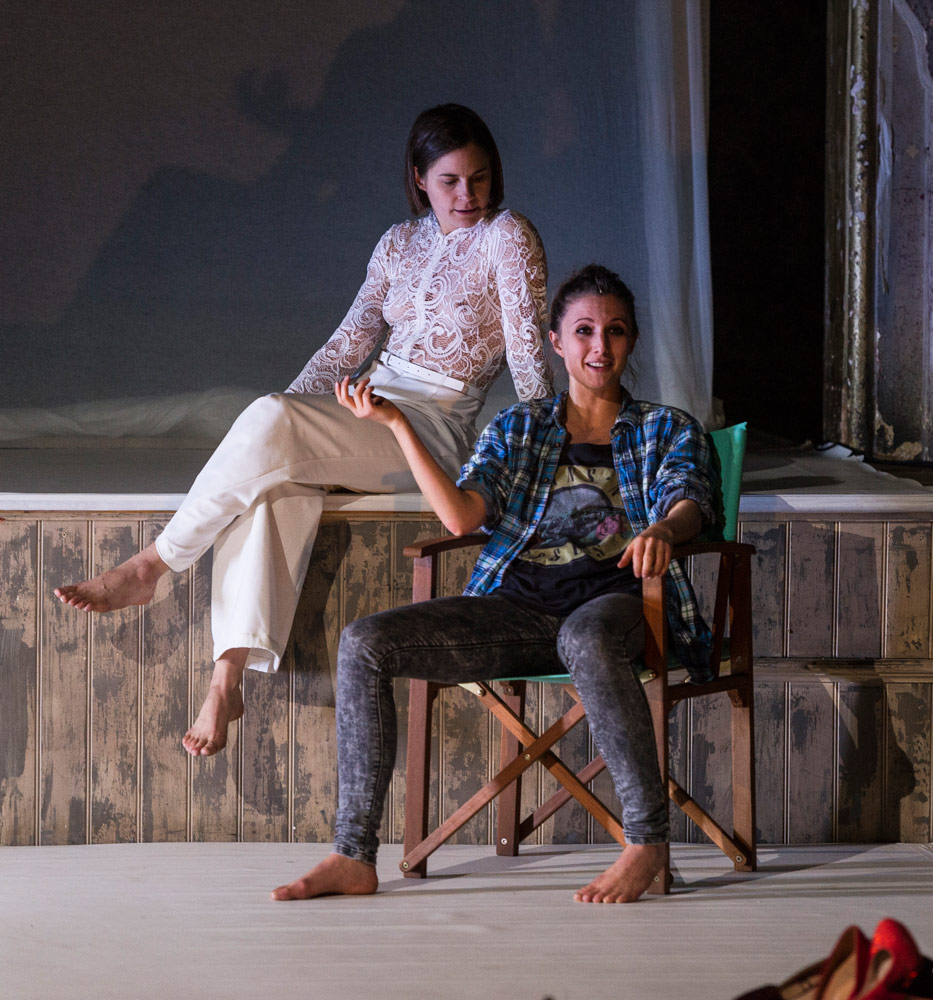
Clemmie Sveaas and Katie Lusby in Wayne Parsons’ A Vestige.
© Foteini Christofilopoulou. (Click image for larger version)
Vestige‘s development marked a new way of working for me and it one that I plan to employ again. I worked with Writer, Ankur Bahl, and Dramaturg, Pooja Ghai, to develop a script that would underpin the work. This process allowed me to cement the narrative arc and understand the motivation and purpose of each character within the larger themes before I started working with the performers in the studio. This meant that studio time was dedicated to creating movement in relationship to the text: sometimes supporting it: sometimes contradicting it: sometimes bringing out sub-textual themes. The result is a layered and multifaceted approach to storytelling, a rich and full work that constantly has the audience needing to work to find the truth.
When I’m creating in the studio, I try not to ‘lock’ anything down too quickly. There is a lot of play: hot seating, physical improvisations, theatrical improvisations, singing, tongue twisters, lots of task work, and sessions on character motivation and text delivery. I place rough physical sketches in the space, see them next to text, let them breath a little, and then move on. Often this means we have lots of loose sketches of ideas floating around, but it also means we can try lots of things, quickly. I then sit with these sketches and give myself time to understand how they relate to the narrative. I ask myself: ‘What does this combination of text and movement say’? And, then make decisions and solidify what the audience will see.
What did you gain from your recent experience of teaching in Beijing?
Beijing was a fantastic experience. I was teaching at the Beijing Dance Academy, leading choreography workshops for a cohort of students on a new course entitled ‘Creative Performance‘. It was great to share my way of making with the students there.
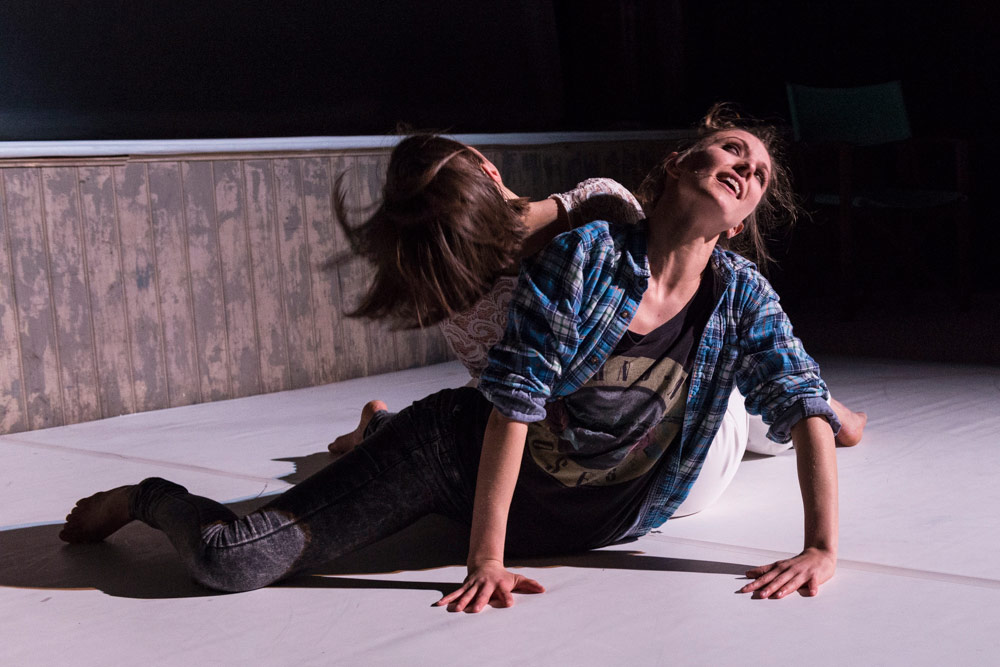
Katie Lusby and Clemmie Sveaas in Wayne Parsons’ A Vestige.
© Foteini Christofilopoulou. (Click image for larger version)
At first, I was a little scared of using text in these sessions, due to the language barrier, but it proved not to be a problem. I learned that even if you don’t speak the same language, some types of narratives are truly universal. These types of exchanges are always rewarding, but this was made all the more enjoyable because I had a class of students who were eager to learn. I hope to return.
What is up next for Wayne Parsons during 2017/18?
After our preview performance, I will have a little down time. I have been producing and creating our show, so I will take the time to breathe and reflect. In March, I have a commission to create a new work for Intoto Dance Company 2017. Then for the rest of the year I’ll be focussing on movement and its relationship to text as I will serve as movement director for a few plays and a Panto. I’ll also be pitching and planning a tour of Vestige for spring 2018 so watch this space!






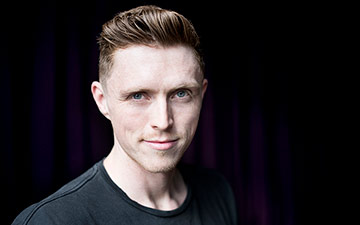
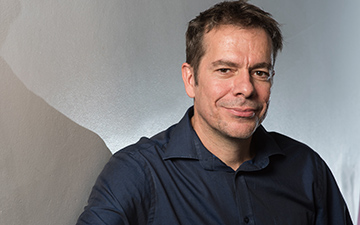


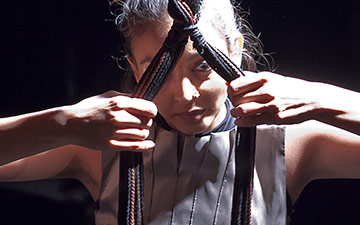


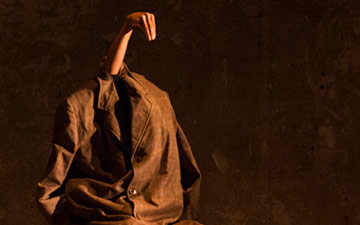



You must be logged in to post a comment.